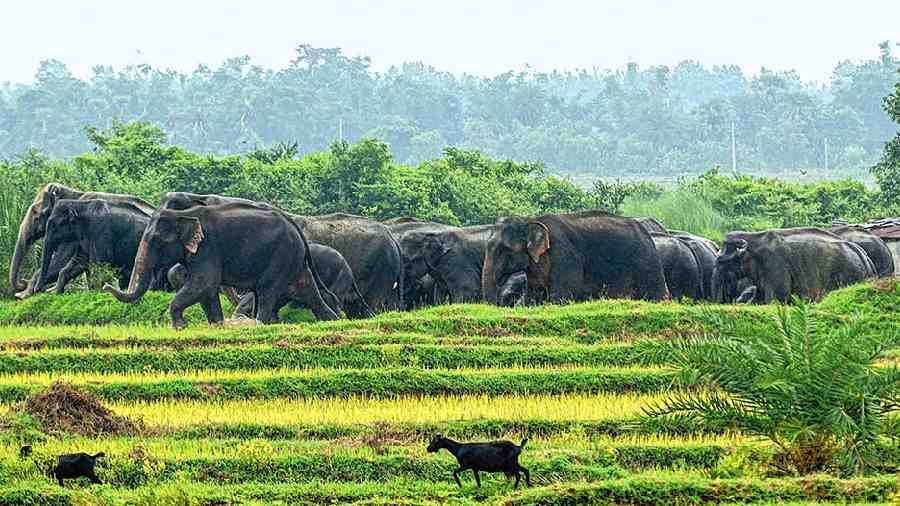India has lost 494 elephants to train accidents, electrocution, poaching and poisoning over the past five years, the Union environment ministry told Parliament on Monday, releasing statistics that highlight challenges undermining elephant conservation efforts.
Responding to a question in the Lok Sabha, the environment ministry said electrocution through contact with power transmission lines accounted for 348 elephant deaths followed by train accidents (80), poaching (41) and poisoning (25) between 2017-18 and 2021-22.
A wildlife expert said while 494 deaths over a five-year period appeared to be a fraction of India’s estimated population of nearly 30,000 wild elephants, such deaths could disrupt herd dynamics and further enhance the risk of human-elephant conflicts.
“The loss of a single older elephant in a herd is the loss of experience for the others in the herd,” said Bilal Habib, a conservation scientist and member of the elephant cell at the Wildlife Institute of India, Dehradun.
“The older members in the herds guide the younger ones. In their absence, the younger ones could stray into human-dominated landscapes, increasing human-elephant conflict.”
The train-linked elephant deaths included 27 in Assam, 17 in Odisha, and 13 in Bengal, while electrocution killed 69 elephants in Assam, 63 in Odisha, and 50 in Tamil Nadu, according to the data released by the ministry.
The ministry, outlining various initiatives to protect elephants, said it had requested states and power transmission agencies to take steps to ensure that transmission lines were at adequate height from the ground to minimise the risk of electrocution.
It said a joint advisory from the environment and railway ministries issued 12 years ago had suggested measures to minimise the risk of elephants being struck by trains.
Guidelines issued six years ago also prescribe measures such as underpasses of adequate height for elephants to cross railway lines.
India has 32 elephant reserves in 14 states. But studies have shown that 30 per cent of the country’s wild elephants live in large and contiguous forests, while the rest are distributed across fragmented landscapes that have shrunk amid growing human activities, including cultivation.
With the expansion of cultivated land along forest boundaries, experts say, elephants are increasingly being drawn to forage for crops such as maize, millets, paddy, sugarcane, and vegetables.
Conservation scientists have in the past recommended steps to mitigate human-elephant conflict such as biofencing cultivated crops with certain crops unpalatable to elephants like chillies, ginger or citrus plants or with beehives.
The ministry also said compensation was paid to local communities for any loss of property or life caused by wild elephants to avoid retaliatory killing.










